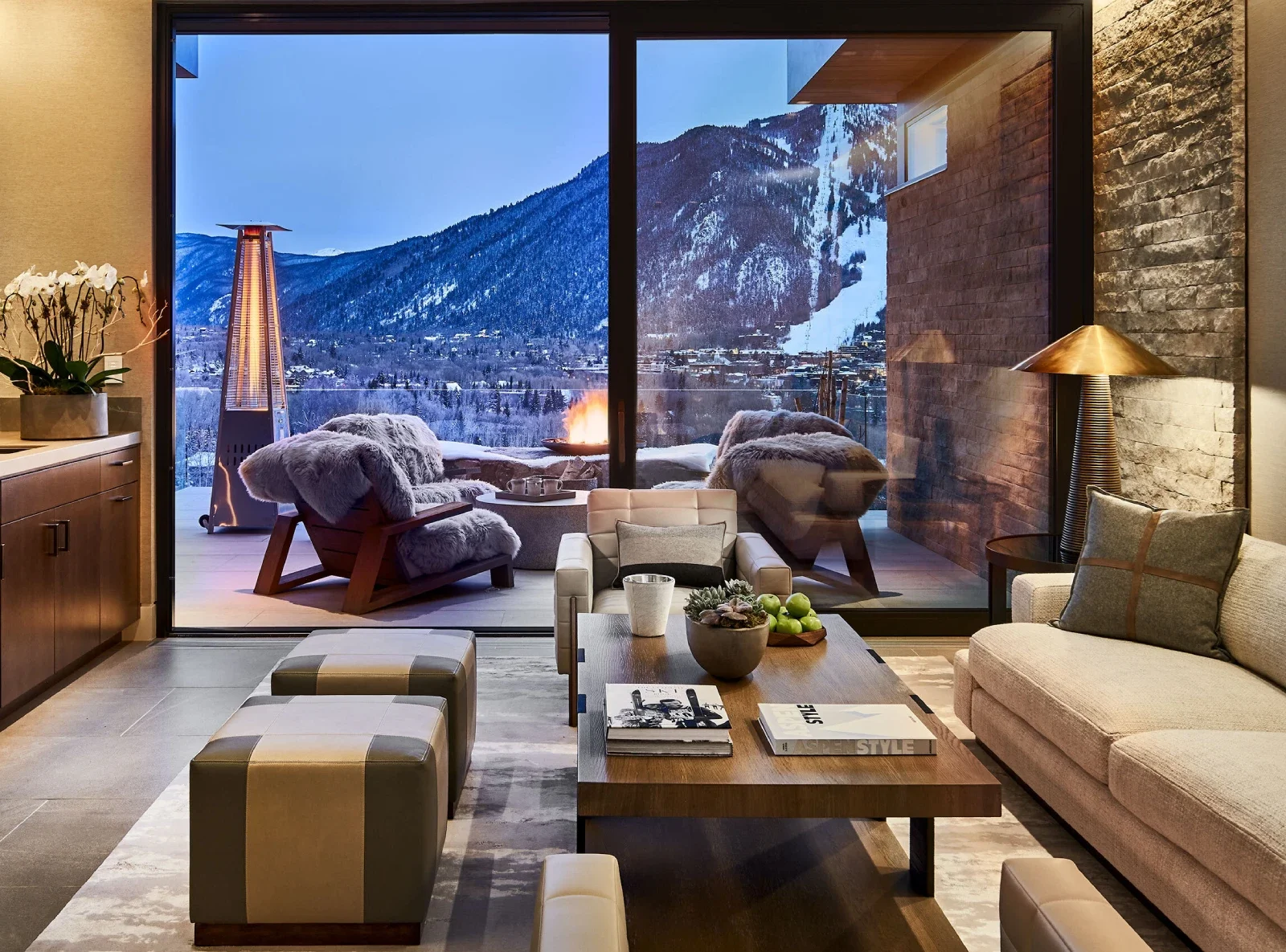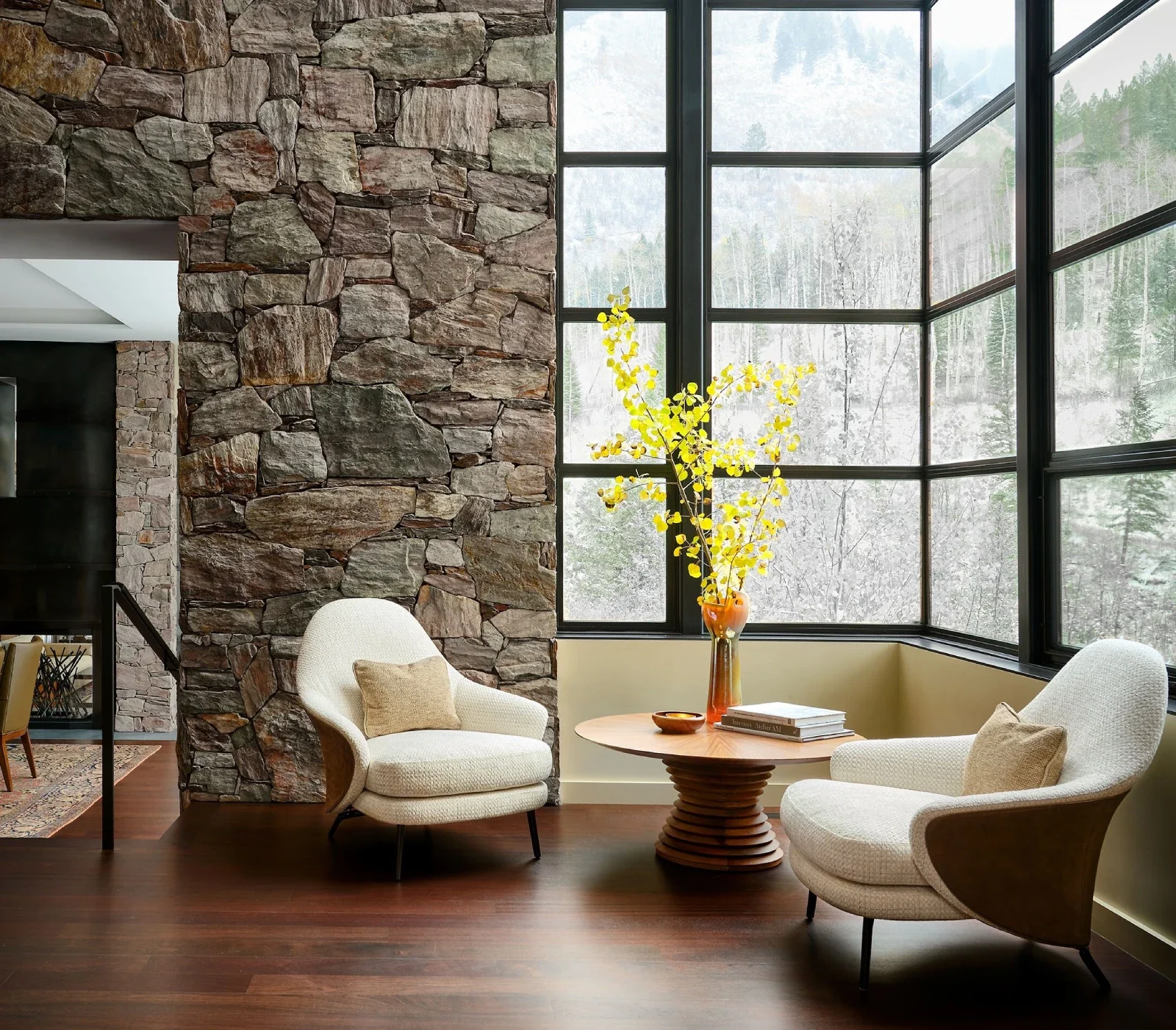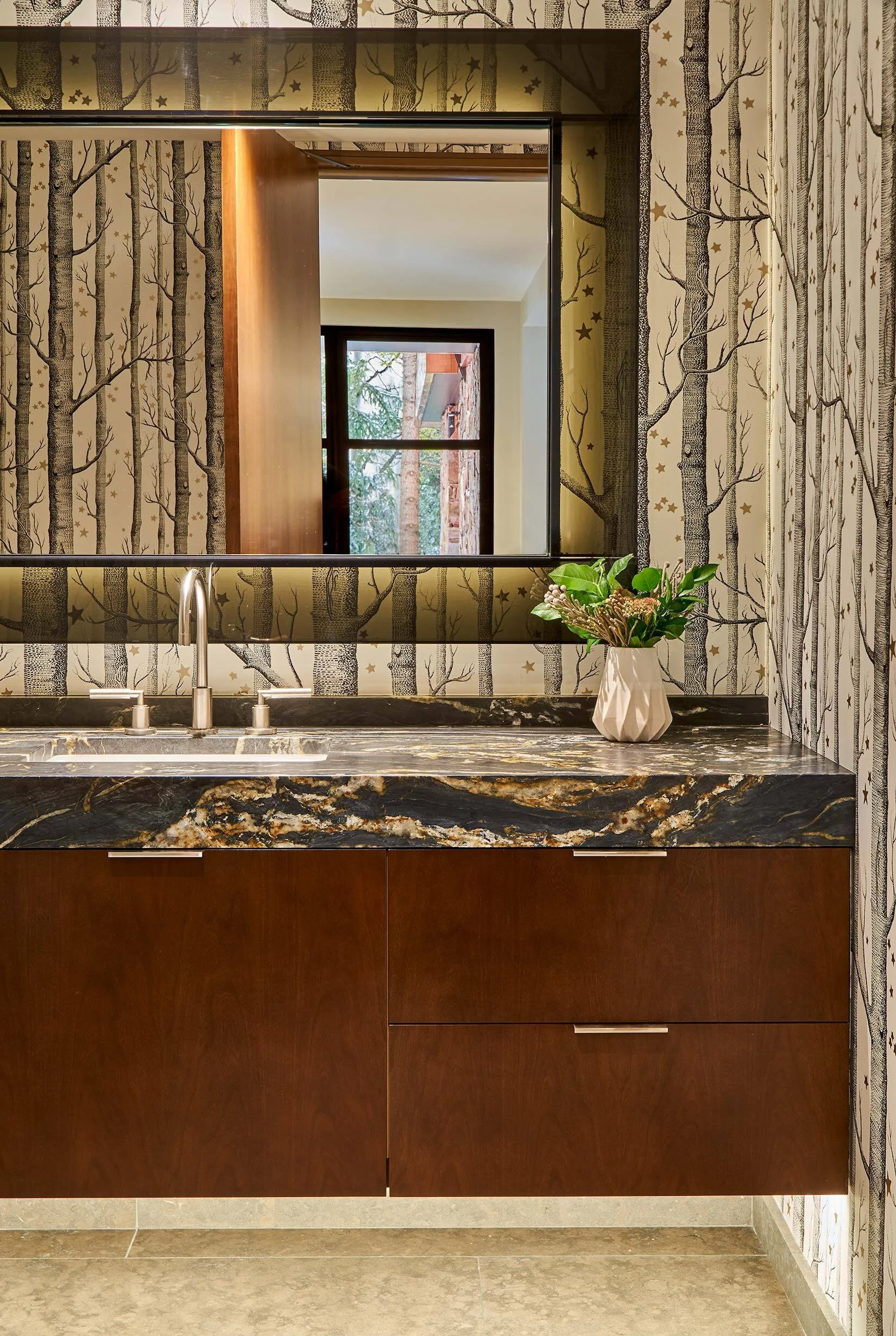Every space tells a story, but without emphasis, that story can feel unclear. So what is the purpose of focus and emphasis in interior design? Emphasis helps the eye add order, intent, and highlights what’s essential in a room. By understanding this design principle, you can transform a flat, uninspired space into one that feels cohesive and intentional.
This guide explains what emphasis means in interior design, why it matters, and how to apply it through color, texture, lighting, and furniture choices. You’ll learn how to identify areas that need stronger visual focus, explore interior design solutions for different styles and layouts, and avoid common design mistakes.
Whether you’re rethinking a living room or adding interest to a minimalist bedroom, these strategies will help you build rooms that feel grounded and complete
What Is Emphasis in Interior Design
Emphasis adds structure and helps make a room easier to understand. It highlights specific areas or elements, guiding the viewer’s attention and creating visual hierarchy. Without emphasis, a room can feel scattered and unfinished, leaving the eye with nowhere to settle.
Designers use emphasis to create a cohesive feel in rooms. It shows the connection between the main feature and the supporting ones, whether it’s a bold fireplace anchoring a living room or a striking pendant light defining a dining area. Good emphasis guides how people move through a room and use it.
Trends in interior design often influence where emphasis is placed. For example, open-concept spaces might use large rugs or lighting clusters to define functional zones, while current color trends can bring focus to a single accent wall or piece of furniture.
Emphasis is not about overwhelming the senses. Instead, it balances bold focal points with supporting elements, so the room stays simple and easy to enjoy. By considering scale, placement, color, and texture, designers can intentionally direct attention without creating visual clutter.
Emphasis is related to concepts such as balance and rhythm, but it plays a distinct role. Understanding what emphasis means and how to achieve it is key to transforming an ordinary room into a visually compelling environment.
Designers use dominance and visual hierarchy to guide the eye, shaping emphasis through varied visual weight, as described by Smashing Magazine.
Why Designers Use Emphasis in a Room
As designers, we use emphasis to give rooms direction and purpose. It ensures that the eye lands on essential features rather than wandering without focus. A clear point of emphasis creates harmony by connecting the room’s elements into a cohesive story.
Emphasis helps define how a space functions. For example, a kitchen island highlighted with pendant lights indicates where food preparation and gathering typically occur. In a living room, an emphasized fireplace or media center naturally organizes seating around it. These cues make spaces feel intuitive and intentional.
This principle is beneficial in open-plan homes where defining separate zones can be challenging. Emphasis works like a quiet signal, distinguishing areas for dining, work, or relaxation without physical barriers, where visual hierarchy influences how people experience interiors, affecting their feelings and reactions within the room.
Without strong emphasis, even well-designed rooms may look dull. By carefully selecting focal points and supporting elements, we can create balance and flow while avoiding a cluttered or chaotic appearance. Emphasis is one of the most effective ways to give any space structure and personality.
Emphasis vs. Focal Point – How They Differ
Emphasis and focal point are related concepts, but they are not identical. A focal point is the main feature in a room. It could be a fireplace, a dramatic light fixture, or a piece of art. The focal point naturally attracts the eye first, acting as the visual anchor of the space.
Emphasis is broader. It includes the focal point, as well as the supporting elements that draw attention to it. For instance, a large window may serve as the focal point, while surrounding furniture, color choices, and lighting are arranged to reinforce its importance. Emphasis helps the focal point fit with the rest of the room.
Rooms can have emphasis without a single dominant focal point. A simple room might use balance and contrast to make certain spots stand out instead of one bold centerpiece. Conversely, a room with multiple competing focal points often feels chaotic.
Understanding this difference is essential for planning layouts and decor. Emphasis helps determine how all design elements interact, guiding the placement of furniture, the use of color, and which features to highlight. This helps avoid confusion and makes each design choice clear and transparent.
A well-designed room seamlessly blends focal points and emphasis, creating an environment that is both engaging and cohesive.
Emphasis in a Room: Quick Diagnostic Checklist
Use this checklist to see if your room has a strong focus or needs changes. Walk through the space and answer each point honestly.
Clear visual hierarchy
From the entry, does your eye land on one dominant feature?
Supporting elements in place
Are furniture and decor arranged to frame the key feature?
Intentional color use
Are bold hues limited to specific spots?
Effective lighting placement
Do accent lights highlight art or details?
Strong sightlines
Is the focal area visible from multiple angles?
Minimal distractions
Are there too many competing statement pieces?
Completing this checklist helps identify gaps before starting a redesign. It ensures any updates will improve visual focus rather than add unnecessary complexity. A room with clear emphasis feels organized, inviting, and easy to navigate.
Types of Emphasis in Interior Design
While there are various ways to create focus in a room, sorting through emphasis in interior design examples will help you choose the best approach. We’ve compiled a list of ideas so you can apply them to your personal space and aesthetic.
Creating Emphasis Through Contrast
Contrast draws the eye by highlighting differences. Light walls paired with dark furniture, or smooth and rough surfaces together, or warm tones set against cool tones, all create natural points of interest. Use contrast carefully to maintain a balanced room. Too many competing contrasts can overwhelm the space and confuse the visual flow. The key is to pair bold elements with neutral surroundings for balance.
Rachel Guest, Partner and Director of Poss Interior Design, explains:
“Emphasis is about guiding the eye with intention. Every room needs a clear story, and emphasis is the tool that makes design choices feel purposeful instead of accidental.”
Using Isolation to Draw the Eye
An object placed alone in a clean, open area immediately becomes a point of focus. This method is often used in simple or modern rooms. A single sculpture on a pedestal or one bold chair in an entryway gains attention through isolation. This method works best when surrounding areas remain uncluttered, allowing the emphasized piece to stand out clearly.
Placement as a Design Tool
Where you position items affects how people notice them. Placing an essential feature along a natural sightline, such as directly opposite a doorway, guarantees it will capture attention. The Maroon Creek Club Remodel illustrates how furniture and architectural elements can be arranged to create strong sightlines and define functional zones.
Scale and Proportion That Command Attention
Oversized items naturally dominate a room. Changing item size can help a room stand out. However, balance is critical.
Elements that are too large compared to surrounding pieces can feel awkward or disrupt harmony. Carefully consider the proportions to maintain a cohesive overall design.
Combining these types of emphasis often produces the strongest results. For example, a large piece of furniture (scale) highlighted by lighting (placement) creates depth and clarity without visual clutter.
How to Create Emphasis in a Room
Once you understand the principles behind emphasis, you can apply them strategically to transform a room. These practical steps focus on key design elements that work well together.
Start with Color and Contrast
Color is one of the easiest tools for building emphasis. A bold accent wall, a brightly colored rug, or vibrant artwork draws the eye immediately. Pair bright colors with soft ones to create contrast without confusion. If you need inspiration, explore current color and texture trends for fresh ideas.
Use Lighting to Highlight Key Features
Lighting can quickly change what the eye sees first. Accent lights, track lights, or wall sconces illuminate art, fireplaces, or other special room features. Proper placement ensures light directs attention without glare or uneven shadows.
Choose a Statement Piece of Furniture
A large or unusual item, like a bold coffee table or headboard, can serve as a central feature. Arrange surrounding furniture to support it. Be selective—one statement piece is usually enough to maintain clarity and avoid visual competition.
Play with Texture, Pattern, and Shape
Texture and pattern add depth and visual weight. A patterned throw pillow on a smooth sofa or a rough stone accent wall against polished flooring creates subtle emphasis. Combine textures and shapes carefully to prevent a cluttered or mismatched appearance.
Draw Attention to Architectural Details
Highlight existing features such as beams, fireplaces, or built-in niches. Proper lighting, contrasting paint, or minimalist styling can make these details stand out without overpowering the rest of the room.
Table Overview: How to Create Emphasis Using Different Elements
| Element | How It Creates Emphasis | Common Mistakes to Avoid |
|---|---|---|
| Color | Bold or contrasting colors draw the eye to walls, furniture, or decor. Pair vibrant hues with neutrals to create balance and a clear focal area. | Using bold colors everywhere, creating chaos, and competing points of focus. |
| Lighting | Accent lighting, like spotlights or sconces, highlights artwork, fireplaces, or textures. Layered light subtly guides attention. | Poor placement or too many fixtures cause glare, shadows, or visual confusion. |
| Furniture | A single unique or oversized piece naturally becomes the centerpiece when other pieces frame and support it. | Multiple statement pieces compete and overwhelm the layout. |
| Texture & Pattern | Mixing smooth and rough surfaces or bold patterns adds depth and directs focus to specific areas. | Too many textures or patterns without balance make the room feel cluttered. |
| Scale & Proportion | Oversized items, such as chandeliers or art, establish hierarchy and capture attention when scaled correctly. | Pieces that are too large or too small disrupt harmony and flow. |
| Placement | Positioning key elements along natural sightlines ensures they stay visible and guide movement through the space. | Cluttered layouts that distract from the intended focal point. |
| Architectural Details | Features like beams, fireplaces, or niches become natural focal points when highlighted with paint or lighting. | Hiding these details behind decor or furniture. |
Applying Emphasis in Different Spaces
The way emphasis works varies depending on the type of room. Each space has its own challenges and opportunities for creating visual focus.
Living Room Ideas
The living room often benefits from a single strong focal point, like a fireplace, a large window, or a statement sofa. Arrange seating to face this feature, and use rugs or lighting to frame it. In open-plan homes, define zones with area rugs or furniture groupings. A dramatic piece of artwork or a striking pendant light can also work well as a centerpiece.
Bedroom Inspiration
In bedrooms, the bed is almost always the natural focal point. Emphasize it with a bold headboard, textured bedding, or symmetrical nightstands. Accent walls behind the bed add depth without requiring significant changes. Keep other furniture simple so they don’t fight for attention.. Soft lighting helps maintain a calm and restful atmosphere while still highlighting key features.
Kitchens and Dining Areas
Kitchens need both function and visual clarity. A kitchen island often acts as the central feature, especially when paired with pendant lights or contrasting cabinetry. In dining areas, a large table and overhead lighting naturally draw the eye. Open shelving or a display of unique dishware can serve as secondary points of interest without overwhelming the space.
Making Small or Minimalist Spaces Pop
Small rooms benefit from carefully chosen emphasis. Too many focal points can make them feel crowded. A single bold feature, such as a textured wall or vibrant piece of art, creates depth and interest. In minimalist designs, emphasis often comes from placement and scale rather than color or pattern. Clean lines and strategic lighting ensure the space feels open while still visually engaging.
Applying these approaches thoughtfully creates spaces that feel both functional and visually compelling, regardless of their size or layout.
Common Mistakes to Avoid with Emphasis
Even well-designed rooms can feel unbalanced when emphasis is misapplied. These mistakes can make a room feel messy or unfinished.
When Focal Points Compete
Rooms should have one dominant focal point. When multiple bold features fight for attention, the eye has no clear place to rest. For example, a large fireplace and an oversized television on the same wall often clash. Decide which element is primary and arrange supporting pieces around it. If a space must include two strong features, use color or lighting to downplay one of them subtly.
Using Color or Lighting the Wrong Way
Color and lighting are powerful, but they can easily overwhelm. Overly bright or mismatched colors create confusion rather than focus. Bad lighting can make the wrong parts stand out or create glare. Stick to a limited color palette and use lighting intentionally to guide attention. Consider layering general, task, and accent lighting to add depth without clutter.
Forgetting the Function of the Room
A nice-looking room that’s hard to use won’t feel comfortable. For instance, a dramatic table centerpiece may look beautiful, but usability and flow are just as important as appearance.
By avoiding these mistakes, emphasis will feel natural and harmonious. A balanced room supports both aesthetics and everyday living, creating spaces that look beautiful and work well for the people who use them.
Real Examples of Emphasis in Interior Design
Seeing real-world applications of emphasis makes the idea easier to get. These examples demonstrate how various elements collaborate to achieve balance and focus.
Artwork as a Focal Point
A large piece of artwork can instantly define a room. In modern living rooms, oversized paintings or photographs are often placed above sofas or mantels to command attention. Designers usually use extra lights to make a piece stand out. The surrounding decor remains simple, so the art remains the undisputed star.
Furniture Placement That Stands Out
The way furniture is arranged can create emphasis, even without bold colors or decorative elements. For instance, a curved sectional sofa naturally forms a visual frame around a central table. Placing a dramatic coffee table or rug at the center strengthens this layout. In open-plan spaces, grouping furniture into zones prevents the room from feeling scattered and gives each area a clear purpose.
Architectural Details That Steal the Show
Existing architectural features often provide natural focal points. Exposed wooden beams, stone fireplaces, or arched doorways bring character to a room. Highlight these details using subtle lighting or contrasting paint colors. Avoid covering them with bulky furniture or excessive decor, which can hide their beauty.
These examples demonstrate that emphasis is not limited to one type of element. Whether through art, furniture, or architecture, the key is intentionality. Each choice should support the overall vision for the room, directing attention without making the room feel unbalanced. By studying how professionals apply these techniques, homeowners can gain ideas for their own spaces and better understand how to balance bold statements with subtle supporting details.
Final Thoughts: Designing Rooms with Strong Emphasis
Emphasis in interior design gives every room a sense of order and purpose. By guiding the eye toward key features, it creates clarity and prevents spaces from feeling flat or cluttered. Whether you use intense color, bright lights, or key room features, the goal is to create harmony between the focal point and surrounding elements.
Successful emphasis starts with observation. Walk through your home and notice where your attention goes. If nothing stands out or multiple features compete, refine the layout, adjust lighting, or simplify decor. Small changes like moving furniture or adding one bold item
When applied thoughtfully, emphasis transforms interiors into spaces that reflect personality while remaining practical. The result is a home that looks cohesive and feels effortless to live in.
FAQs About Emphasis in Interior Design
Why Is Emphasis Important in Interior Design?
Emphasis organizes a room by guiding the eye to key features, creating clarity, harmony, and balance while improving both function and aesthetic appeal.
What Is an Example of Emphasis in Design?
A bold fireplace framed by seating, highlighted with lighting, and surrounded by neutral decor is a classic example of emphasis done well.
What Are the 7 Interior Design Principles?
The seven principles are balance, rhythm, emphasis, proportion, scale, harmony, and unity. Together, they ensure a space looks cohesive and functions well.
How Many Focal Points Should a Room Have?
Most rooms require a single main focal point. In large open spaces, two secondary points are acceptable if they complement rather than compete with each other.
Can You Create Emphasis in Small Spaces?
Yes. Use a single bold feature, such as a striking piece of art or a unique light fixture, to create focus without overwhelming the space.
What Role Does Lighting Play in Emphasis?
Lighting highlights focal points and creates visual layers. Proper placement draws attention while preventing glare or competing light sources from distracting the eye.
Should Every Room Have a Focal Point?
Ideally, yes. A focal point provides structure and flow, helping even simple or minimalist rooms feel intentional and visually balanced.





